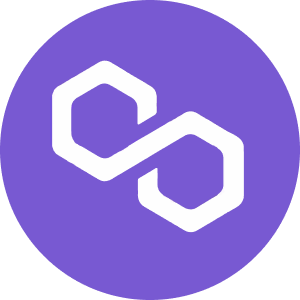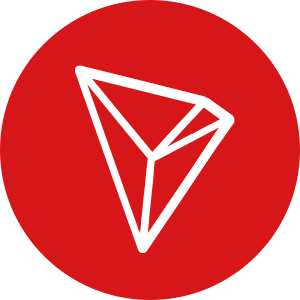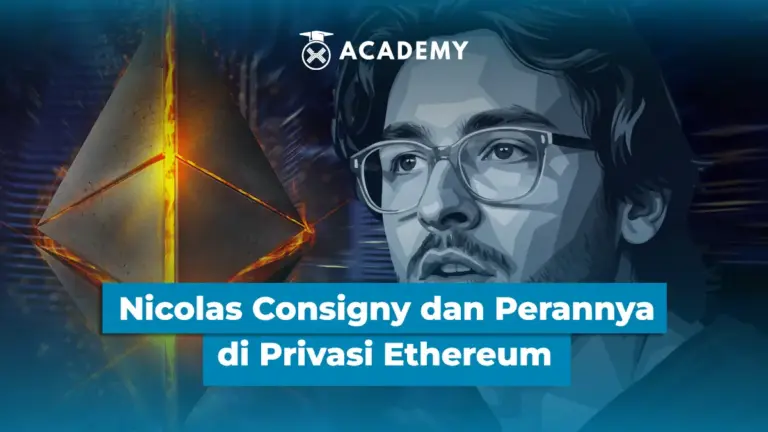In the crypto world, community attention isn’t always focused on tokens or price movements. There are also prominent figures behind rising projects.
In recent months, Monad has become a hot topic for its approach to parallel EVM technology, and that raises a simple question: who exactly is Keone Hon?
Who Is Keone Hon?
Keone Hon is a technical figure who leads Monad Labs as CEO and Co-Founder.
He is known as an engineer with a strong background in high-performance systems, making him a key figure in the blockchain world.
Before entering crypto, Keone worked extensively in low-latency trading environments at Getco and Jump Trading, where he developed systems that required decision-making in microseconds.
This experience shaped his perspective on performance, throughput, and efficiency.
His name has been frequently discussed in the crypto community since Monad emerged with its parallel EVM technology, which offers a combination of portability and speed.
Many developers see this approach as the answer to the need for faster EVM, especially for applications with millions of users.
This is where Keone emerged as a noteworthy engineer-founder, not because of his image, but because of his technical prowess and vision for how the EVM could be pushed much faster than it currently is.
Educational Background and Early Career

Before he became known as the man behind Monad Labs, Keone Hon’s journey was shaped by a combination of a strong technical education and work experience in environments that demanded extreme performance.
Here’s a look at Keone Hon’s educational background and early career:
MIT Education and Foundations of Computational Engineering
Keone studied at MIT, majoring in Computer Science, Mathematics, and a Master of Finance, before pursuing an M.Eng. in computer science.
This combination provided a solid foundation for understanding complex systems and computational performance. This knowledge would later prove invaluable when he entered the blockchain world.
Roles in High-Frequency Trading: Getco and Jump Trading
After graduating, he entered the world of high-frequency trading through Getco, then continued his career at Jump Trading. HFT itself is a hyper-fast world, where buy-sell decisions are made in microseconds.
There, Keone built ultra-fast systems and led teams that handled low-latency strategies. This performance pressure shaped his mindset: systems must be efficient, stable, and capable of handling high loads.
Years of experience in the HFT environment accustomed Keone to pushing the limits of performance, and this perspective carried over into crypto.
This led him to see the opportunity to build an EVM that could be much faster than current ones.
Transition to Crypto
Keone Hon’s journey into the crypto industry actually began with his extensive experience building high-performance systems in the traditional trading world. Here’s how he transitioned to crypto.
Joining the Crypto Division at Jump
Around 2020–2021, Keone became immersed in the crypto world when Jump formed a dedicated division to build Web3 infrastructure.
With a background as an HFT engineer accustomed to pursuing low latency and extreme efficiency, he became involved in Solana DeFi projects and saw firsthand how fast blockchain design could unlock new opportunities.
This experience further convinced Keone that performance was key to broader adoption.
Reasons for Switching to Blockchain Technology
From this exploration, Keone realized that many mainstream blockchains were still limited by throughput bottlenecks.
He saw an opportunity to apply his systems engineering skills, which he had previously used to build ultra-fast trading systems, to the blockchain world.
He believed the industry needed a much more efficient EVM, and this need ultimately led him to leave Jump to found Monad with two colleagues.
The Birth of Monad: Keone Hon’s Mission
Before the Monad crypto asset was created, Keone had long been involved in the world of high-performance systems. This experience ultimately shaped his thinking, recognizing that blockchain still had significant room for optimization.
The following is an overview of the birth of Monad as Keone Hon’s mission.
Blockchain Performance Problems He Wants to Solve
While still at Jump Crypto in 2021, Keone began to realize the severe limitations of the EVM linear execution model.
Ethereum was only capable of processing around 1,000,000 transactions per day, far from sufficient for applications that hoped to serve millions of active users.
From his exploration of Solana, which offers high throughput and low fees, Keone saw an urgent need for a much faster EVM without sacrificing portability.
Monad’s Parallel EVM Approach
Keone’s experience building ultra-fast systems in HFT made him very familiar with the benefits of CPU parallelism. He brought the same concept to blockchain, allowing transactions to be executed in parallel, rather than one at a time.
This approach differs from the traditional EVM and unlocks the potential for throughput to levels required by mainstream applications, such as online games with millions of daily interactions.
Keone’s Monad Design Philosophy
Keone emphasizes the importance of efficiency at all levels, from execution and state management to integration between components.
For him, the best way to improve performance is to control the entire architecture holistically and then optimize it from the bottom up.
This approach reflects the “engineer’s mindset,” where the system must be fast, stable, and able to handle spikes in activity without overwhelming developers with gas costs or performance limitations.
What Is Monad?

Monad has become a hot topic because it offers a new approach to making EVM blockchains run faster without sacrificing the developer experience. To understand the basic idea, we can start with the following:
EVM-Compatible Layer-1 Blockchain
Monad is built as an L1 that adheres to Ethereum standards and tools, allowing developers to move applications without rewriting them.
This approach stems from Keone Hon’s extensive experience in the HFT world, where system portability and efficiency are key.
After seeing the need for a faster EVM while working at Jump Crypto, he began designing Monad as an answer to the high demand for performance without sacrificing compatibility.
Parallel Execution and Increased Throughput
Keone’s experience building low-latency trading systems shaped his vision of Monad as a parallel EVM capable of handling much larger transaction volumes.
He understood from the world of futures trading and Solana DeFi that applications scaled to millions of users required capacity that serial execution (one-by-one processing) simply couldn’t achieve.
This is where the parallel execution design emerged, focusing on daily throughput, not sensational TPS claims.
State Optimization and Internal Infrastructure
Monad also adopts engineering principles from HFT systems, from efficient state management and architectural control to optimizing each layer of the stack.
Keone Hon emphasized that performance improvements cannot be achieved in parts. All layers, from execution and data storage to consensus, need to be designed as a whole.
The point is to provide developers with a “faster machine” without changing the way they build applications.
Keone Hon’s Strategic Role in the Monad Project
One reason Keone Hon’s name quickly became known in the crypto community is because he not only serves as CEO but also serves as the technical brain behind Monad. Here are some of his strategic roles in the Monad project.
Lead Engineer and System Architect
Keone is not the type of CEO who only manages business strategy. He is directly involved as the main architect, designing Monad’s technical direction, from parallel execution and performance optimization to design consistency across the stack.
His experience building low-latency systems in the high-frequency trading world makes him comfortable tinkering with technical details and ensuring Monad has a strong performance foundation.
He leads the design process so that each layer—execution, database, and consensus—can perform optimally as a single, integrated system.
Contributions to the Developer Community and Ecosystem
Beyond internal engineering, Keone is also active in publically voicing Monad’s vision and design.
He frequently appears on podcasts, conferences, and technical discussions to explain how their parallel EVM works, the trade-offs, and why high throughput is important for applications that aim to reach millions of users.
His openness to criticism and questions makes the community feel included. Developers can understand his design philosophy, provide feedback, and even test Monad’s assumptions.
This approach helps build trust and opens up opportunities for collaboration within the ecosystem they are developing.
Monad’s Position in the Blockchain Ecosystem
To understand Monad’s current position, it’s important to look at how the project is faring amidst the modern L1 competition, which increasingly demands high performance and a smoother developer experience.
Competing in the High-Performance L1 Realm
Monad falls into the category of high-performance L1 blockchains, but brings a different approach by maintaining full compatibility with the EVM.
This drive stems from Keone Hon’s experience in seeing the need for massive throughput—not hundreds of TPS (Transactions Per Second), but billions of transactions per day.
With a parallelized architecture from execution to consensus, Monad aims to offer a “much faster EVM engine” without forcing developers to switch ecosystems or learn new tooling.
Adoption Challenges and the Developer Ecosystem
While the technology’s design is impressive, the biggest challenge remains the same as for all new L1s: building an ecosystem.
Developers need to be convinced that high performance isn’t just a number, but that it can truly support large, highly interactive applications at low cost.
Keone Hon has been quite active in opening technical discussions and explaining performance trade-offs, but dApp availability, comprehensive tooling, and a mature community remain long-term challenges before Monad can compete for broader adoption.
Risks and Challenges of Developing Technology Like Monad
While Monad’s approach sounds promising, there are a number of risks that need to be realistically understood.
First, high-performance blockchain design always requires a thorough audit, from code execution to consensus, as any aggressive optimization has the potential to expose new vulnerabilities.
Another challenge stems from parallel execution, which, while increasing capacity, carries the risk of system complexity and potentially inconsistent results.
Monad also boasts full EVM compatibility, which means they must ensure all developer tools, contracts, and workflows run smoothly.
Achieving this kind of consistency is no easy task, especially when performance is drastically improved.
Furthermore, competition in the L1 space is intensifying, with many projects claiming high throughput and low fees. This means Monad is being tested not only technically, but also in terms of ecosystem and adoption.
Finally, the implementation of state parallelism carries the potential for subtle and difficult-to-detect bugs. Small errors in state synchronization can have significant security implications.
All of this makes Monad development challenging, but it’s a natural fit for any new technology trying to push the limits of performance without getting caught up in excessive hype.
The Future of Monad and the Role of Keone Hon
Looking ahead, Monad’s parallel EVM approach adds a new dimension to the effort to make blockchain faster and more efficient.
The idea of ??executing multiple processes simultaneously opens up significant opportunities for applications that require high interaction, but it still requires time to be proven through real-world use.
Keone Hon’s role here is crucial, as he maintains the technical direction while ensuring this high-performance vision remains realistic and usable by developers.
However, Monad’s future depends on three factors: whether developers are willing to build on it, how quickly a supporting ecosystem forms, and how the technology matures through testing and iteration.
Without over-promising, Monad has room to grow, but its path will ultimately be determined by the quality of its implementation and community response.
By the way, in addition to gaining in-depth insights through various popular crypto education articles, you can also broaden your horizons through a collection of tutorials and choose from a variety of popular articles that suit your interests.
Besides updating your knowledge, you can also directly monitor digital asset prices on Indodax Market and stay up-to-date with the latest crypto news. For a more personalized trading experience, explore Indodax’s OTC trading service. Don’t forget to activate notifications so you don’t miss out on important information about blockchain, crypto assets, and other trading opportunities.
You can also follow our latest news via Google News for faster and more reliable access to information. For an easy and secure trading experience, download the best crypto app from INDODAX on the App Store or Google Play Store.
Maximize your crypto assets with the INDODAX Earn feature, a practical way to earn passive income from your stored assets. Register now with INDODAX and easily complete KYC to start trading crypto more safely, conveniently, and reliably!
Indodax Official Contact
Customer Service Number: (021) 5065 8888 | Support Email: [email protected]
Also follow us on social media here: Instagram, X, Youtube & Telegram
Conclusion
So, that was an interesting discussion about Keone Hon, the man behind the Monad project, which you can read more about in the INDODAX Academy’s Crypto Academy.
In conclusion, Keone Hon’s journey demonstrates how his strong engineering background, experience in the HFT world, and his observation of performance needs in the crypto ecosystem ultimately led to the birth of Monad.
Through a parallel EVM approach, this project seeks to offer the efficiency required for large-scale applications, while still facing challenges such as developer adoption, ecosystem readiness, and technology maturation.
FAQ
1.Who is Keone Hon?
Keone Hon is the CEO and co-founder of Monad Labs, with an MIT background and extensive experience in high-frequency trading before entering the blockchain world.
2.What is Keone Hon’s relationship to Jump Trading?
He worked as an engineer and quant at Jump Trading, particularly in low-latency systems, before entering crypto.
3.What is Monad?
Monad is an EVM-compatible layer-1 blockchain designed to improve performance with a parallel execution approach.
4.Is Monad on mainnet yet?
Monad is currently on mainnet, marking the start of the network’s operational phase. While it offers EVM compatibility and high performance, its ecosystem is still developing. Therefore, users should exercise caution when trying it and be sure to check official channels for the latest information.
5.Is the founder’s profile important in evaluating a crypto project?
The founder is one factor, but it should also be combined with independent research, audits, the developer ecosystem, and the project’s technical track record.
Author: Boy






 Polkadot 8.92%
Polkadot 8.92%
 BNB 0.50%
BNB 0.50%
 Solana 4.81%
Solana 4.81%
 Ethereum 2.37%
Ethereum 2.37%
 Cardano 1.35%
Cardano 1.35%
 Polygon Ecosystem Token 2.13%
Polygon Ecosystem Token 2.13%
 Tron 2.85%
Tron 2.85%
 Market
Market


